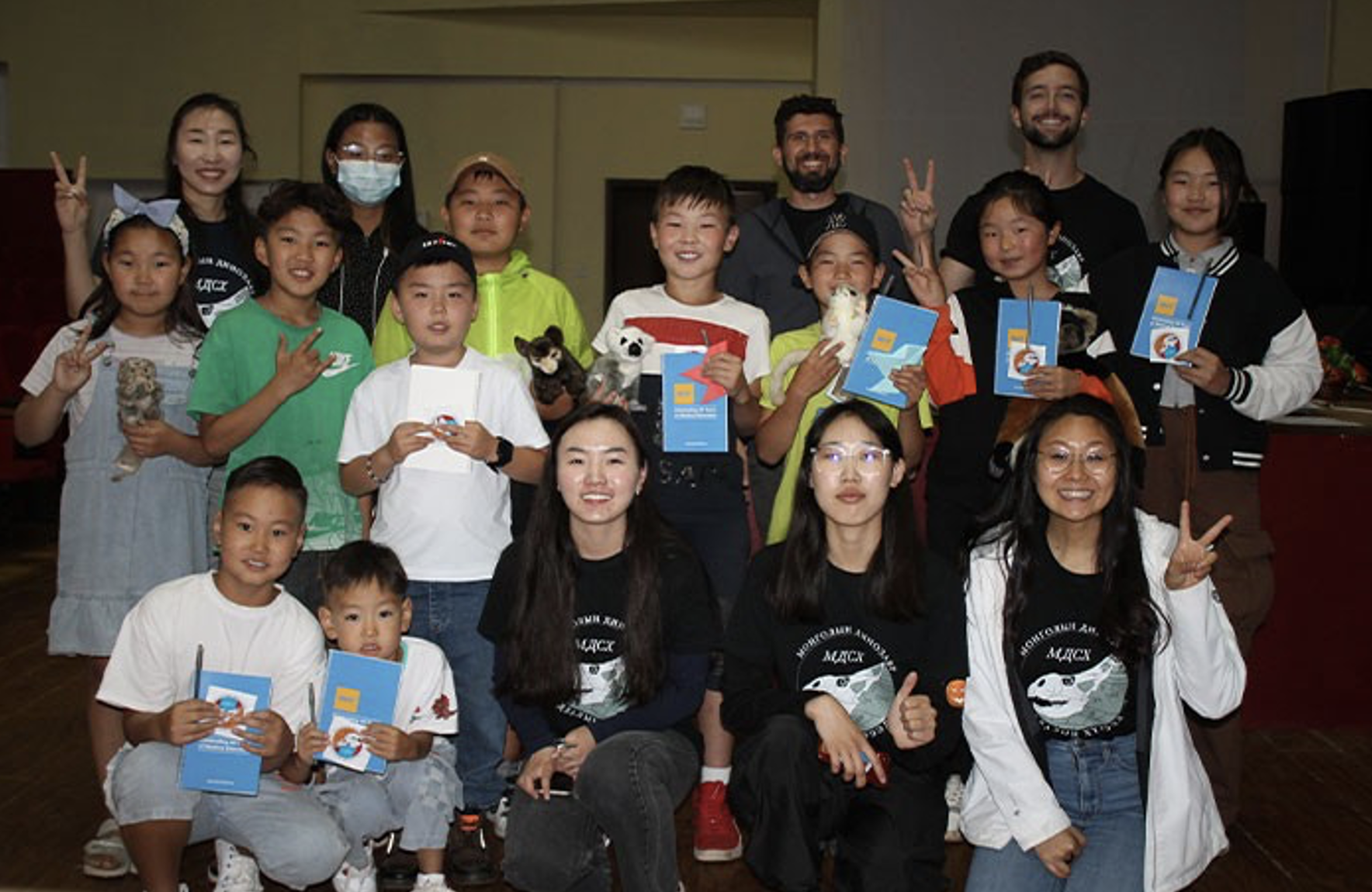In August 2023, two students at the New York Institute of Technology’s College of Osteopathic Medicine traveled to Mongolia to perform research and teach middle school students about biomechanics. Melody Young, a D.O. / PhD student, had used an earlier Edward Guiliano Global Fellowship to travel to Costa Rica and North Carolina, where she studied three-toes sloths and collected grip force data from lemurs, respectively.
Accompanied by fellow student Michael Chernik, they brought their “Are You Stronger than a Lemur” outreach project to Mongolia to teach middle-school children about the origins of human biomechanics and to collect data on human development and gripping performance.
Young and Chernik explained to the students why they chose to study lemurs as a way to understand grip force in the context of evolution and had students take a six-question quiz covering topics of biomechanics, muscle physiology, statistics, primatology, and human evolution.
Students then became scientists as they used a dynamometer—a device used to measure force—to discover their own grip strength. Data was plotted and their grip force was compared to lemurs, fellow students, and data from American students. After guiding the children through interpreting their recorded data, they retook the quiz from the beginning of the lesson to assess what they had learned through the experiment.
“I hope our participating students realize that science doesn’t have to be hard, boring, or out of their realm,” Young says. “Are You Stronger Than a Lemur” is so special because it turns people who may have never had any interest in science into citizens who are now actively participating in the scientific process. It takes an evolutionary/biomechanical question that we are interested in about in the lab and makes it relevant to every single person who takes part in it.”
By the end of their time with the middle schoolers, Young and Chernik had collected two sets of data: An assessment of whether their program had objectively taught the students core topics of biomechanics and the actual grip force data they collected using the dynamometers. Chernik believes they were successful in teaching about science and the greater field of STEM.
“This trip was humbling and gave me the opportunity to interact with a people and culture I had no previous experience with,” Young says about her time in Mongolia. “We were able to visit traditional nomadic homes—gers—and the people inside; their instinct was always to share and to give. The people of Mongolia helped me feel as though I had a family right there.”
“Our time in Mongolia allowed me to grow tremendously,” adds Chernik. “Experiencing the nomadic lifestyle was eye-opening and allowed me to reflect on my own practices and values. The students’ excitement for the program and learning was unlike anything I have ever seen.”
During their time there, Young and Chernik had no knowledge of Mongolian—a language that, while using the Russian alphabet, is completely one of its own. The pair traveled with two Mongolian college students and an educator, who helped them overcome cultural and language barriers and, Chernik says, exposed them to all the country had to offer while making them feel at home.
